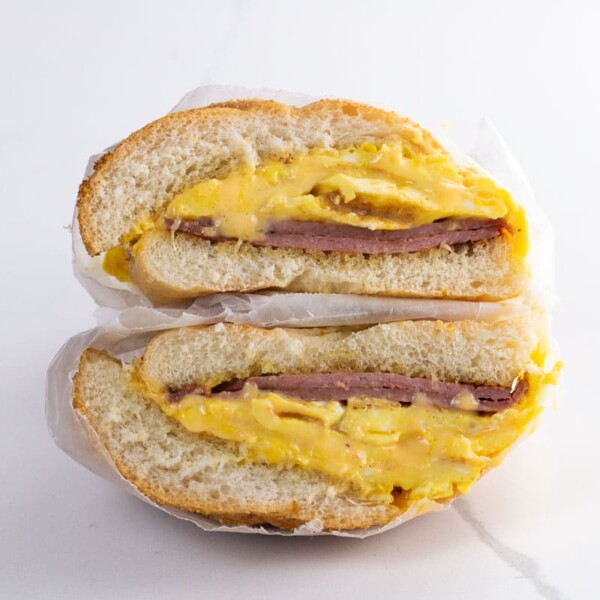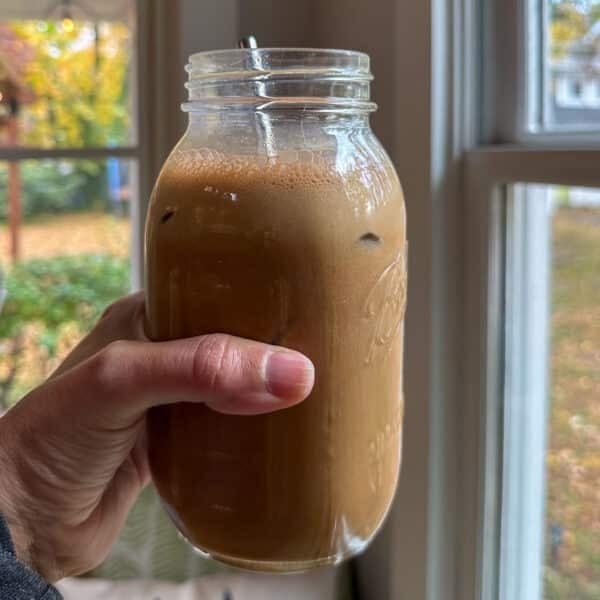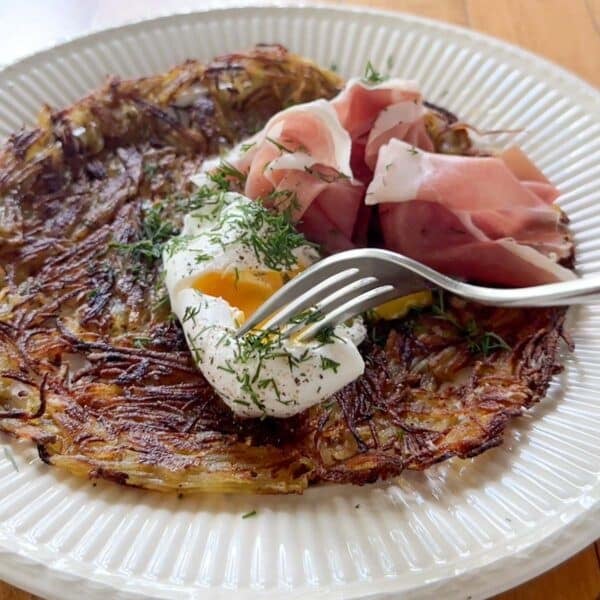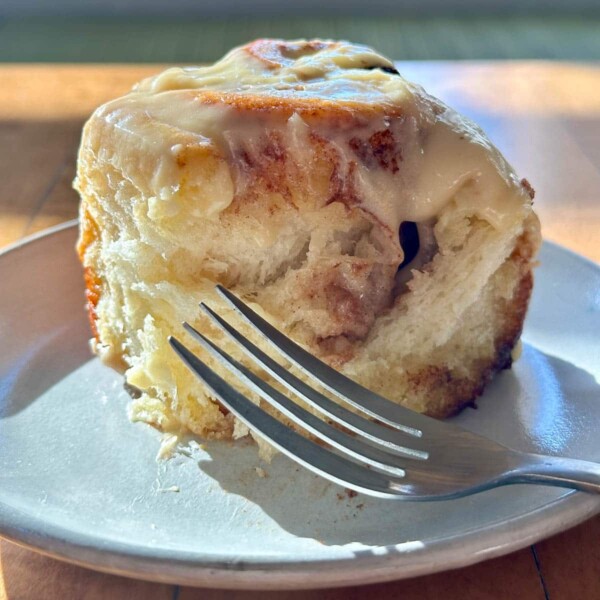This post may contain affiliate links. Learn more.
This pork roll egg and cheese sandwich nails the New Jersey-area classic recipe. Here’s how to make this specialty of delis and diners just right at home.
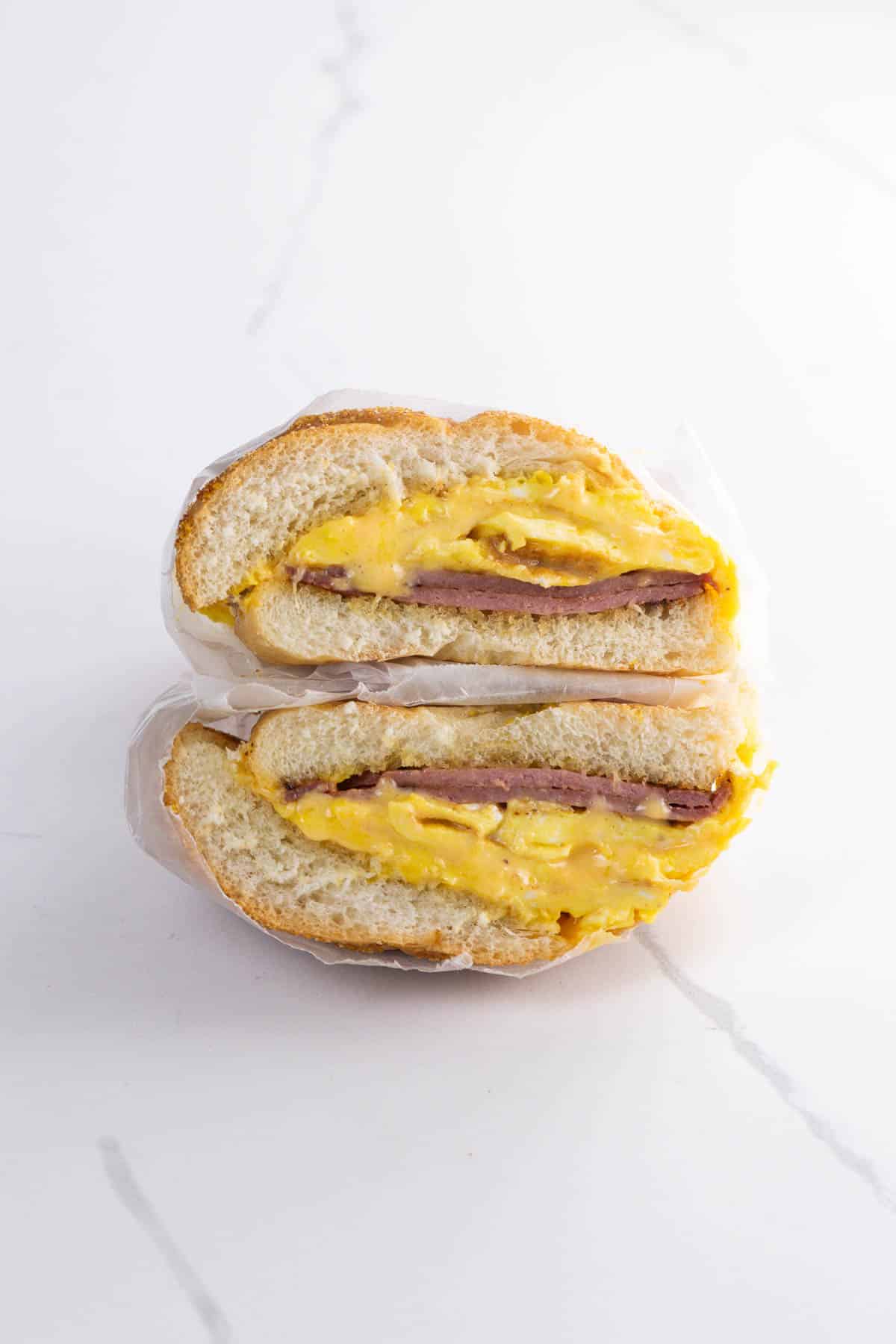
Why we love this recipe
The pork roll egg and cheese sandwich — alternately called a Taylor ham egg and cheese sandwich, but that didn’t come from me — is one of a handful of truly iconic New Jersey-area foods. Though a version of this meal likely originated in England as a hearty hand-held breakfast for folks on their way to work, over the years it’s become synonymous with the tri-state area.
This recipe gets each element just right:
- Generous, lightly scrambled eggs that stay tender and fold easily onto the sandwich (or sub in a fried egg)
- Super-savory, couldn’t-be-easier, quickly pan-fried pork roll
- Plenty of good old American cheese
- A basic, well-behaved kaiser roll that gets griddled with butter and then lightly steamed in deli paper (trust me)
What you’ll need
Here’s a glance at the ingredients you’ll need to make this recipe.
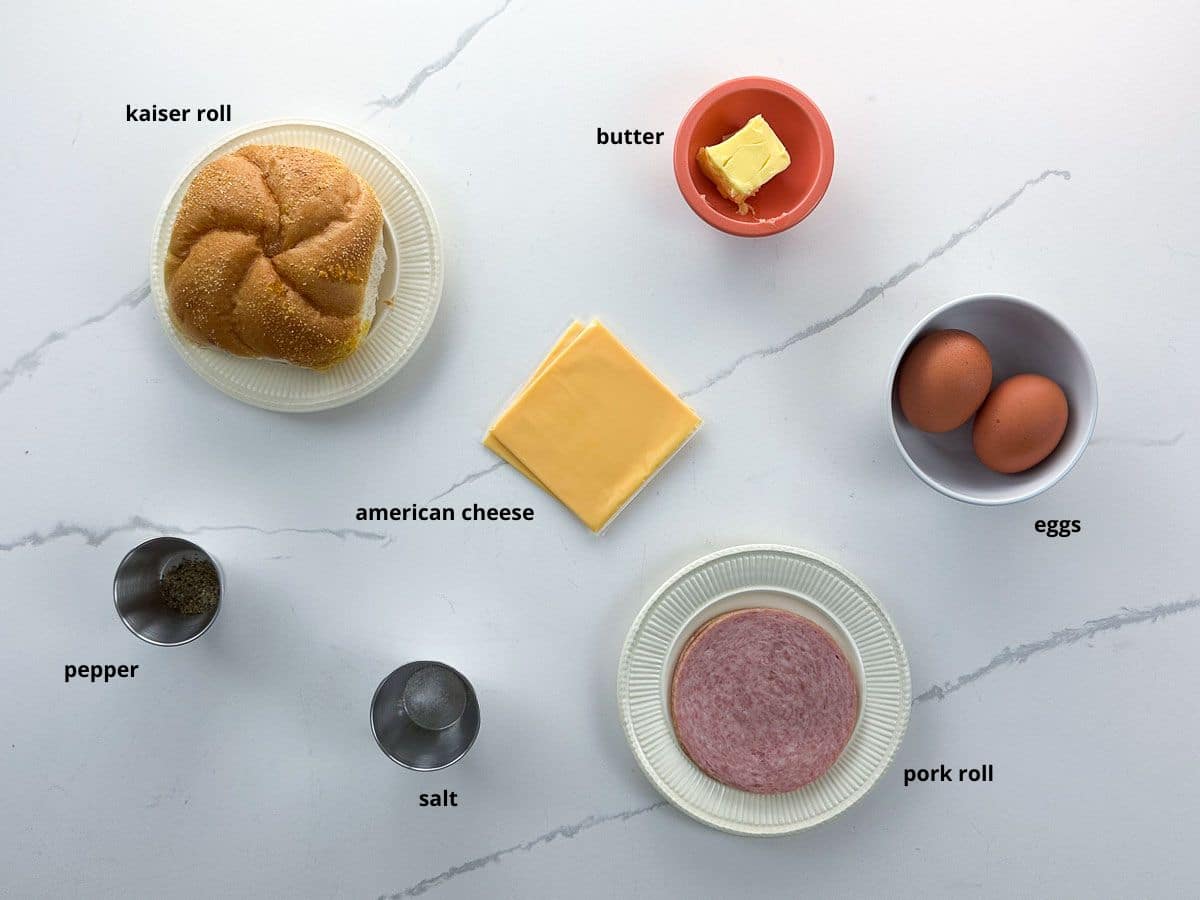
- A kaiser roll is also called a hard roll or bulky roll. It’s straightforward, griddles well, and yields nicely to the bite.
- You can use any eggs you like, but sourcing good ones makes all the difference in terms of flavor, animal welfare, and environmental health. I’ve devoted a short section below to helping you parse the details, if you’d like to.
- Pork roll is alternately called Taylor ham in some parts of New Jersey. As issues will do in my home state, this one has become a matter of major, mostly good-natured contention over the years. Whatever you call it (and just to be clear, I call it pork roll), this is a processed pork product created in Trenton in the mid-1800s. For this recipe, I recommend buying it sliced — if a supermarket carries it, you’ll usually find it in a small red and white box near the bacon.
- For a classic experience, use regular yellow American cheese from the supermarket, such as the Kraft singles pictured above. Or level up, if you like, with an organic version. (Applegate Farms is my longtime favorite.)
- Even in a sandwich like this, I’m going to advocate for a really good-quality butter, because it just makes everything taste so much better. Here and virtually everywhere, I start with a cultured, salted butter from grass-fed cows. This sounds fancy but doesn’t have to be. Kerrygold, for example, is sold in most supermarkets at a reasonable price.
Sourcing eggs
The least-complicated (though often not the most convenient) way to source great eggs is to buy from local farmers whom you know and trust, either directly from the farm or at a farmers’ market or small grocery store.
If you’re shopping at a U.S. supermarket, things can get a little more complicated. Here’s a quick guide to the terminology that will and won’t help you choose the best eggs you can afford.
Words that mean something
- Organic
- Pastured (best) or free-range
- USDA A or AA
- Certified Humane or Animal Welfare Approved seals
Words that don’t mean anything
- Natural (anything can be called natural)
- Vegetarian-fed (chickens are natural omnivores)
- No added hormones (this is required by the government)
- Antibiotic-free (chickens are rarely medicated with antibiotics)
How to make it
Here’s an overview of what you’ll do to make a fabulous pork roll egg and cheese sandwich. You can see the steps in action in the video that accompanies this post, and get all the details in the recipe card below.
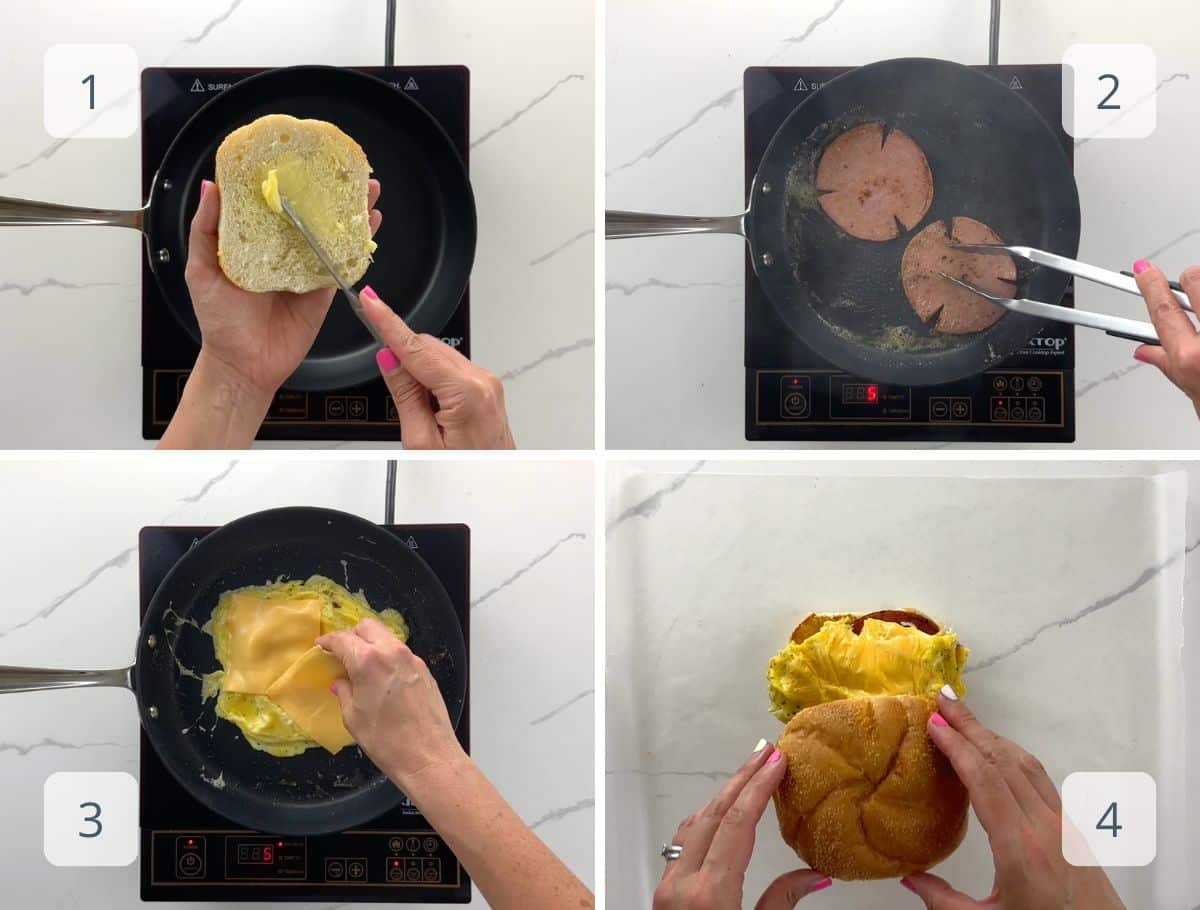
- First you’ll split, butter, and toast the roll.
- Briefly cook the pork roll.
- Scramble and cook the eggs and let the cheese melt on top.
- Assemble the sandwich, wrap it in deli paper and let sit for five minutes before cutting in half to serve. That’s it!
Expert tips and FAQs
Sure thing. You may prefer a fried egg, cooked any way you like (more here). Try adding a thin slice of perfectly ripe tomato. Or swap in an everything bagel or a toasted english muffin for the roll.
I usually try to say yes to this question. But: Nope. This ephemeral delight peaks five minutes after coming off the pan, and the cooking process is a carefully calibrated dance. Plus, the whole thing only takes a few minutes from start to finish. Make it, enjoy it, remember it. You can always do it again tomorrow.
Sandwich leftovers are tricky and really depend on your tolerance for bread that’s no longer performing at peak levels. If you want to go for it, I recommend wrapping the leftovers in foil and reheating in the oven or toaster oven until warmed through.
More favorite breakfast sandwiches
- Leveled-up scrambled egg sandwich
- Bacon egg and cheese
- Sausage egg and cheese
- Ham egg and cheese sandwich
- Pepper and egg sandwich
- Bacon egg and cheese croissant
- Sausage egg and cheese croissant
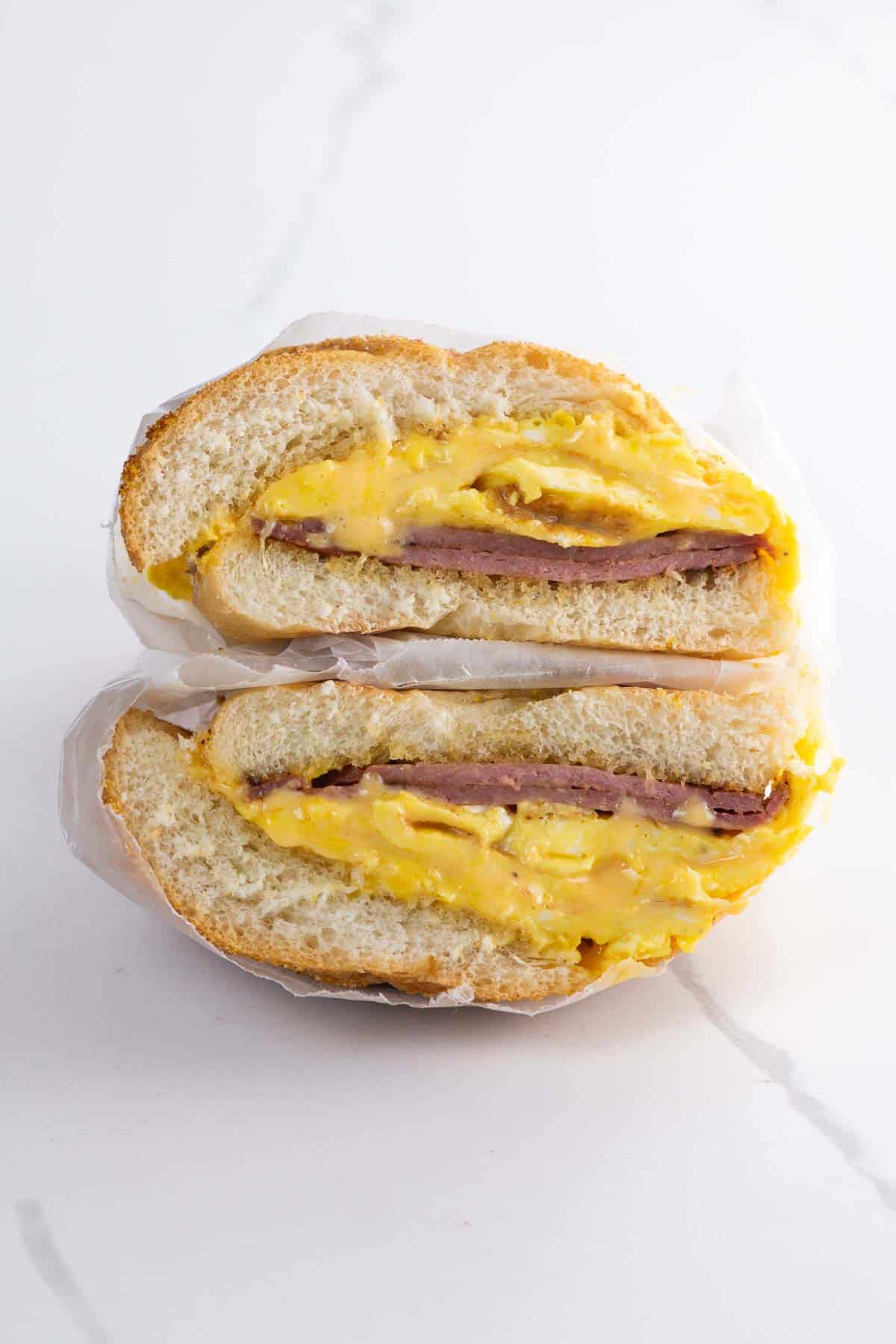
Summarize & Save This Content On
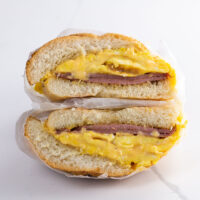
Pork Roll Egg and Cheese Sandwich
Ingredients
- 1 kaiser roll
- 2 tablespoons (28 grams) butter, softened, divided
- 2 slices pork roll
- 2 large eggs
- ⅛ teaspoon salt
- 1//8 teaspoon freshly ground black pepper
- 2 slices American cheese
- Ketchup and/or hot sauce, optional, for serving
Instructions
- Set a 10-inch skillet or dark nonstick frying pan over medium heat.
- Split the roll in half across the beltline and spread each cut face with about 1/2 tablespoon of the butter. Place roll cut-sides down onto the skillet and cook until lightly toasted. Set aside.
- Melt remaining tablespoon of butter in the skillet.
- Make three small, evenly-spaced slits around the perimeter of each slice of the pork roll to prevent them from curling up as they cook.
- Add pork roll to skillet and cook, pressing with a spatula from time to time to flatten and flipping once or twice, until warmed through and lightly browned on both sides. Drain on paper towels.
- Crack the eggs into a small mixing bowl and add the salt and pepper. Beat with a fork until homogenous.
- Pour the scrambled eggs into the skillet. Cook, dragging the edges to the center from time to time and swirling the pan once in a while to encourage the uncooked top parts to wend their way to the bottom.
- When egg is just about cooked, place the cheese slices on top to cover the surface and let them melt a bit.
- To assemble the sandwich, place the pork roll and then the cheese-covered eggs onto the bottom half of the roll and top with the other half of the roll.
- For an authentic experience, you'll want the sandwich to steam a bit before serving. Wrap it in deli paper (or parchment or wax paper if that's what you've got) before cutting in half. Then wrap the whole thing in foil. Let it rest for five minutes before serving (with ketchup and hot sauce, if you like).
Notes
- A kaiser roll is also called a hard roll or bulky roll. It's straightforward, griddles well, and yields nicely to the bite.
- Pork roll is alternately called Taylor ham in some parts of New Jersey. As issues will do in my home state, this one has become a matter of major, mostly good-natured contention over the years. Whatever you call it (and just to be clear, I call it pork roll), this is a processed pork product created in Trenton in the mid-1800s. For this recipe, I recommend buying it sliced — if a supermarket carries it, you'll usually find it in a small red and white box near the bacon.
- For a classic experience, use regular yellow American cheese from the supermarket, such as the Kraft singles pictured above. Or level up, if you like, with an organic version. (Applegate Farms is my longtime favorite.)
- Even in a sandwich like this, I'm going to advocate for a really good-quality butter, because it just makes everything taste so much better. Here and virtually everywhere, I start with a cultured, salted butter from grass-fed cows. This sounds fancy but doesn't have to be. Kerrygold, for example, is sold in most supermarkets at a reasonable price.
- I don’t recommend making this recipe in advance. This ephemeral delight peaks five minutes after coming off the pan, and the cooking process is a carefully calibrated dance. Plus, the whole thing only takes a few minutes from start to finish. Make it, enjoy it, remember it. You can always do it again tomorrow.
- Sandwich leftovers are tricky and really depend on your tolerance for bread that's no longer performing at peak levels. If you want to go for it, I recommend wrapping the leftovers in foil and reheating in the oven or toaster oven until warmed through.
Nutrition
Nutrition information is automatically calculated, so should only be used as an approximation.

